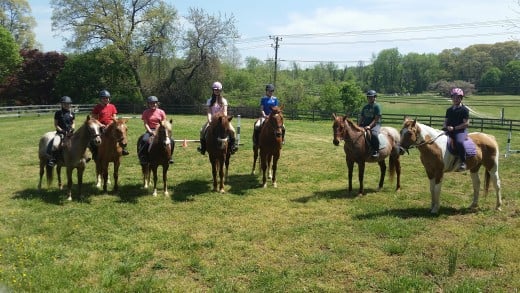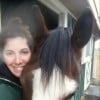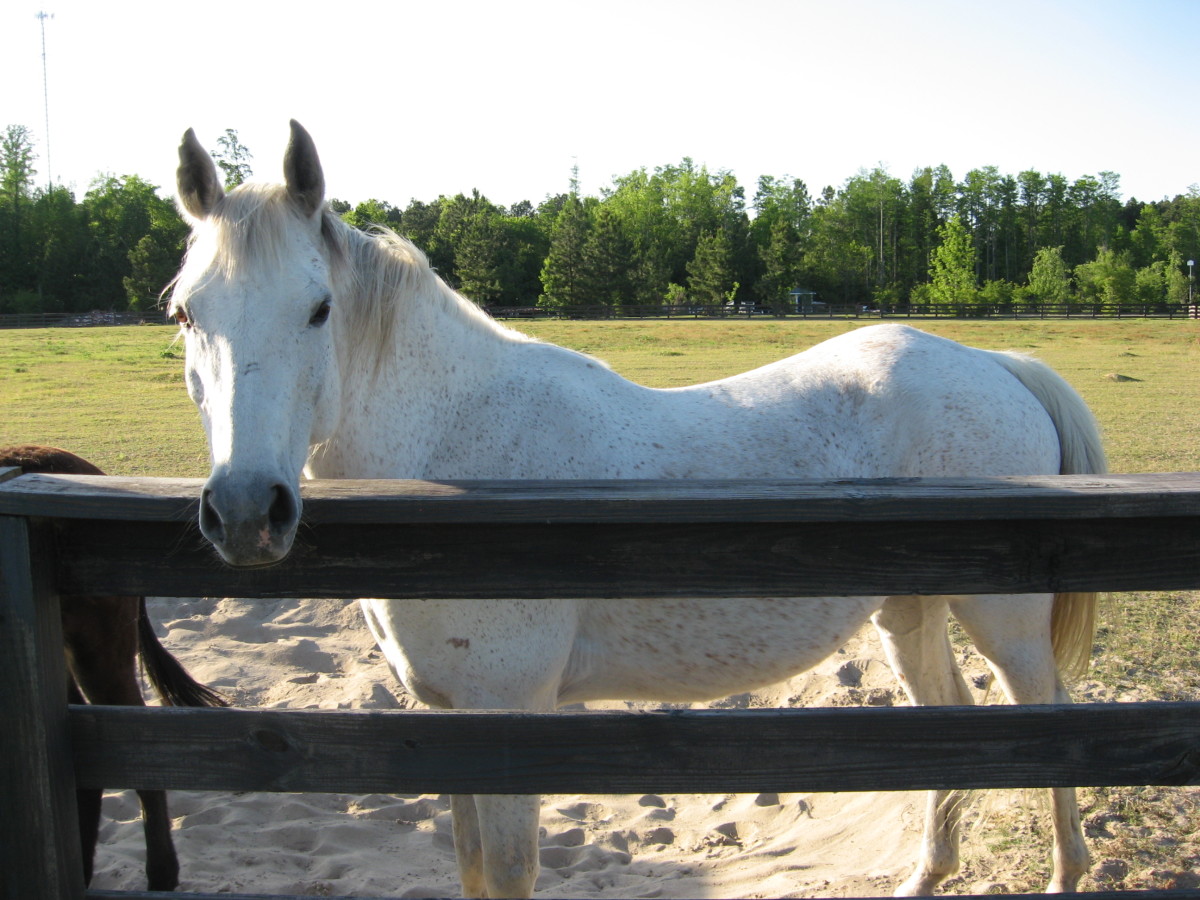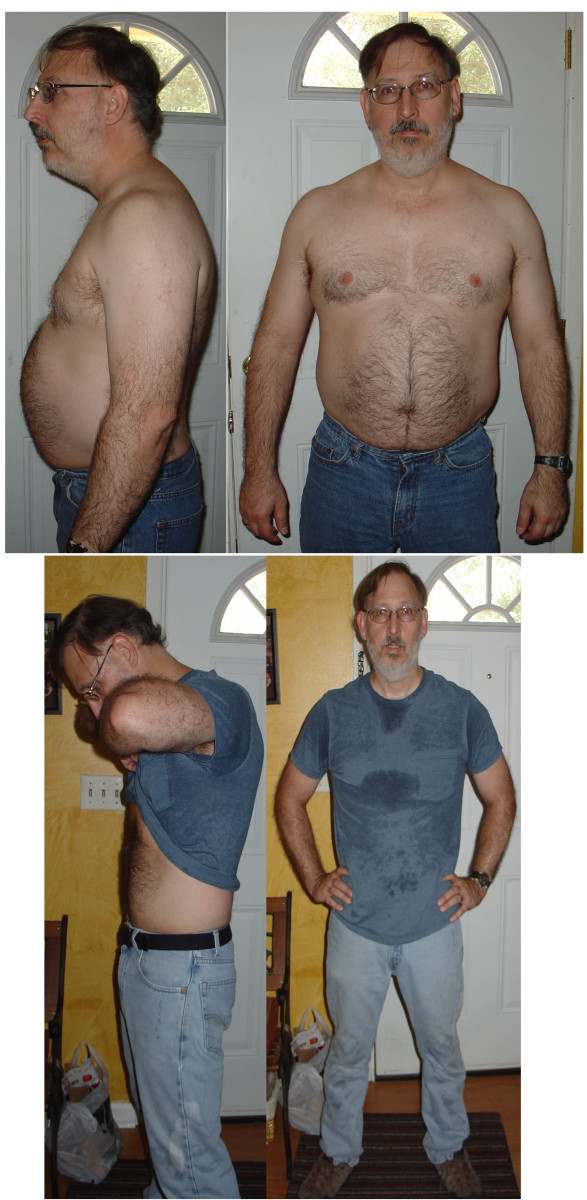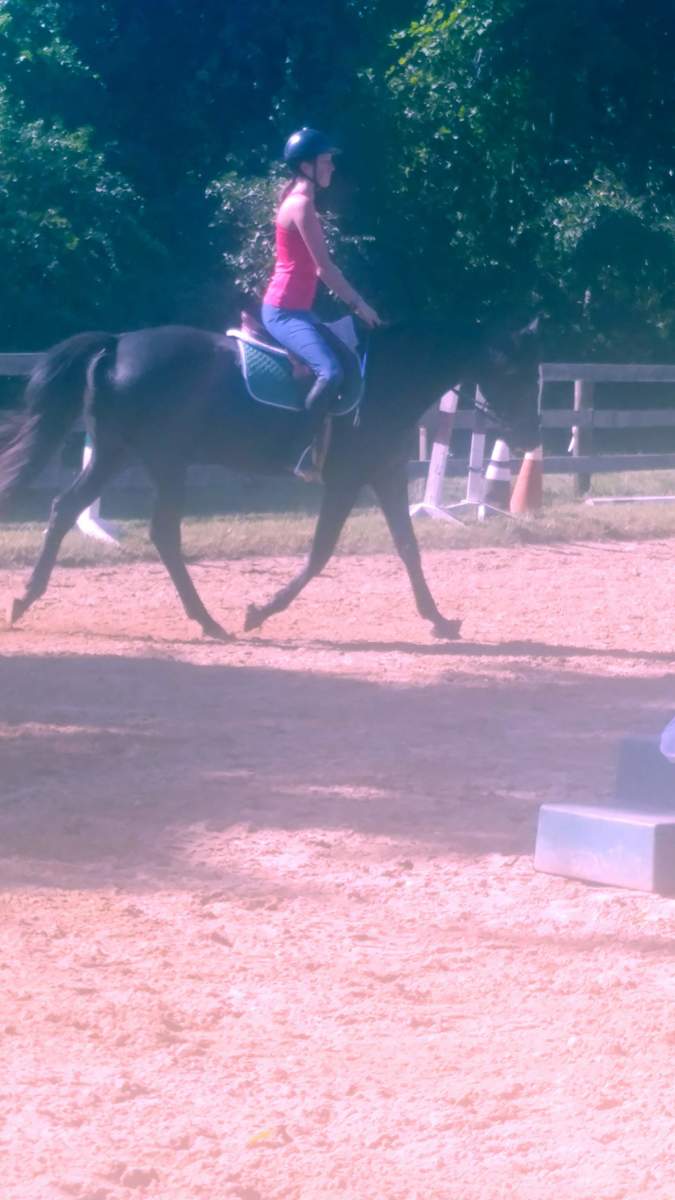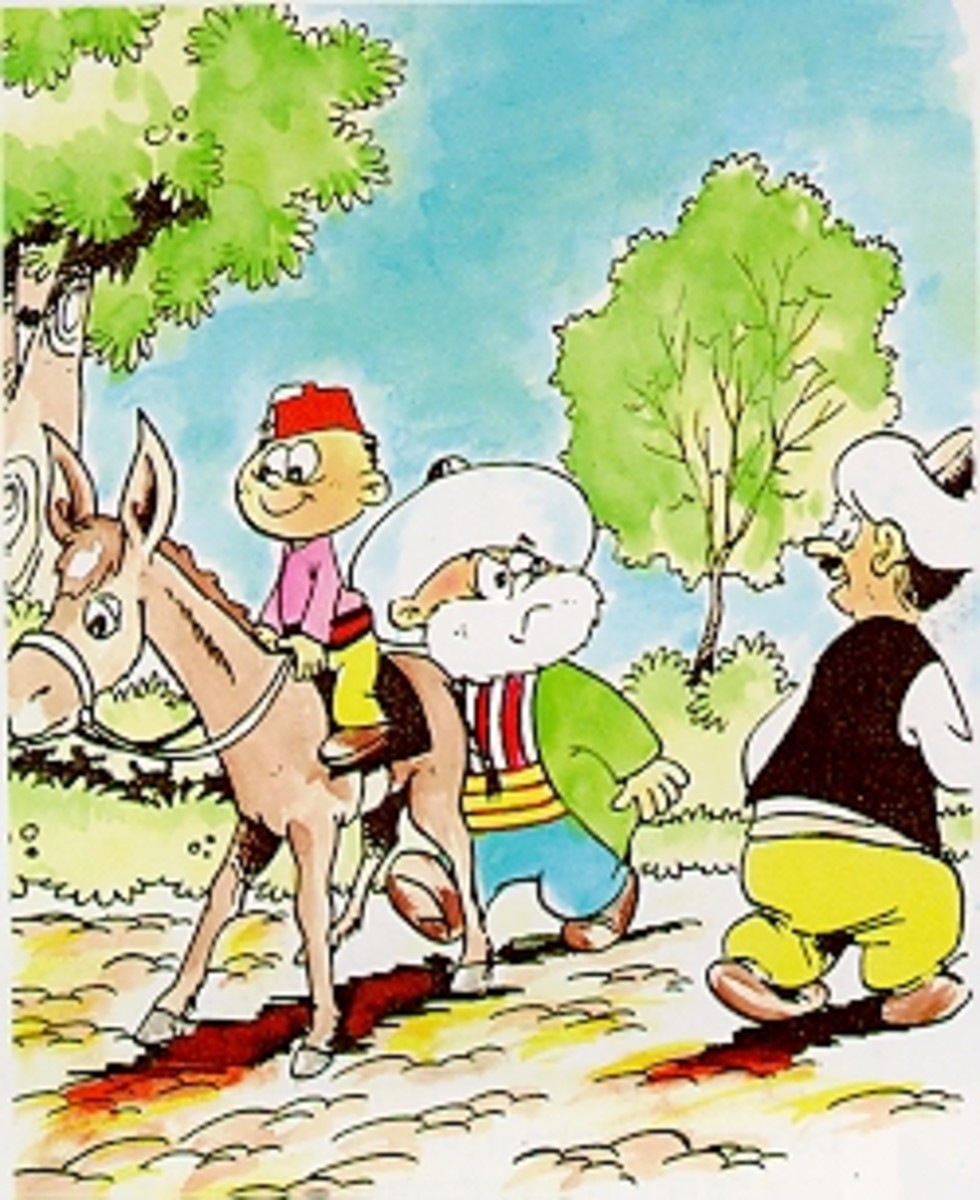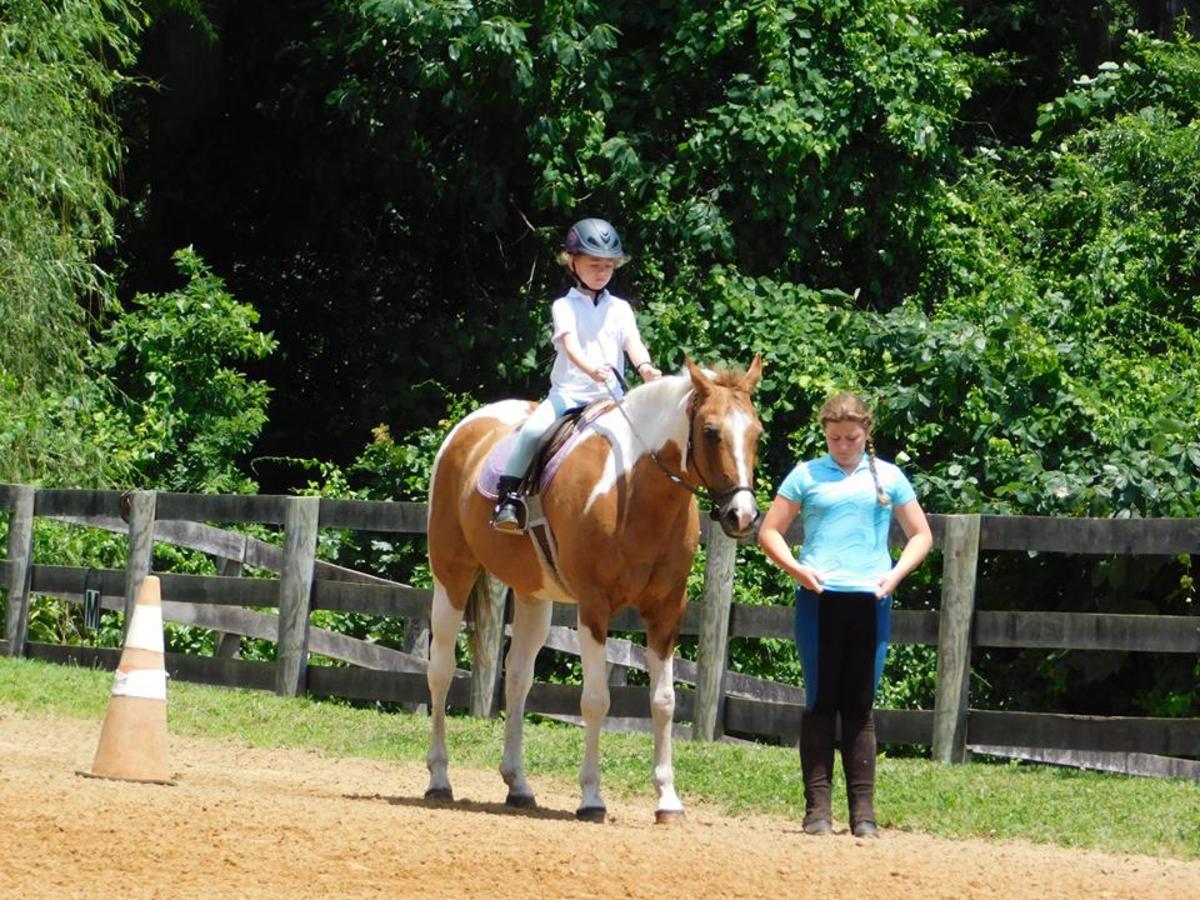Advice For Beginners on Common Problems-Part 2
Lesson Horses and Their Bag of Tricks
Yesterday, I wrote about one of the common lesson horse behaviors, that is known to frustrate beginner riders. That would be a horse that tries to pull your reins out of your hands to stop and eat grass while you are working.
We discussed how a strong proper position can help with this, as well as exercises to help the rider gain the confidence they need to ride through the challenge of a horse that wants to stop for lunch during your ride.
Today, I'm going to address another common lesson horse issue, being barn sour or gate sour. Meaning that given every opportunity the horse tries to go out the gate or back into the barn.
Most lesson horses are doing this in a lazy fashion. They know to get back to the barn they are done working. If you have encountered a horse that is taking you at an uncontrollable speed to try and get back to the barn, that should be dealt with by a professional rider. I'm writing this from the perspective that you are working with a reputable instructor who is putting you on suitable mounts.
Why and How They Display This Behavior
As I said before, most lesson horses are barn or gate sour because they are lazy and they are going to try every trick they know to get out of work. So we have to keep this in mind when we are making our corrections, that no matter what they do, and how we correct it, we have to stay focused on getting them away from the gate or barn, and back to the task at hand.
I have seen students just yank back on the reins to try and pull the horse to a stop. Typically this won't work, because the horse will just lean on the bit and keep pulling back on you. You learn quickly in your riding life that you can't out pull a horse. Not to mention, if the horse does come to a stop, even if he hasn't made it out the gate or into the barn, he still got what he wanted, which was to get out of work. We have to think like a horse, outsmart them with our techniques. If we are vigilant and consistent with our corrections, horses get the point quickly that you aren't going to let them get away with those shenanigans.
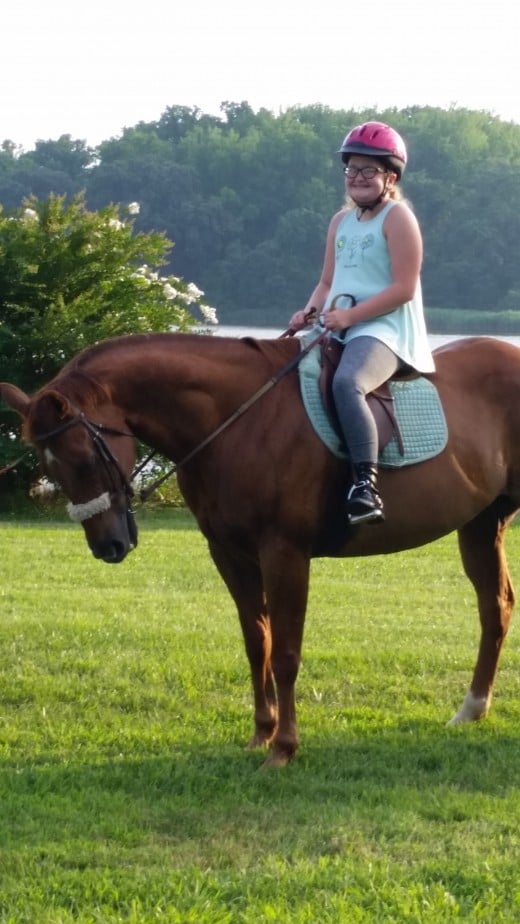
The Shoulder Dropper
Often times, when the horses pass their planned escape route they will drop there outside shoulder down, which will put you off balance, and then that gives them the moment of control they need to change direction and go where they want to go.
Generally, you will feel the horse start to push against your outside leg and get heavy in your outside rein. That the warning sign that he is about to try and duck out. Some horses are very shady and wait until the last minute, but they all do give some warning. Some more obvious than others.
What Do We Do To Prepare?
So, if we know that the horse is going to be pushing against our outside leg we need to do as much practice as we can using our outside leg to block the horse's body on the outside.
Exercise 1
Take a traffic cone and set it up in the middle of the arena, and just work on starting at the walk spiraling in and out around it. Focusing on the fact that you are using your legs and hands together to get the horse around the cone. When we want him to move in we push with our outside leg, and open our inside rein and inside leg every so slightly to allow him to move in on the spiral. Once he moves in your inside leg holds him there while your inside hand stays up and that is what is going to keep his shoulder lifting up ( remember them dropping their shoulder is part of their technique for ducking in the barn or gate so you have to get confident controlling the shoulders). When you are ready for him to move out on the spiral you are going to open your outside leg ever so slightly, push him out with your inside leg. Then while keeping both hands an even length on the reins ( straight line, hand, bit, elbow)you will lift your hands up and to the outside ever so slightly. So practice spiraling in and out around the cone until you feel like the horse is responding well. It should feel like you are combining the use of your hands to control his shoulder and your legs to control the back half of his body to keep him going the direction you want him to go.
We are not trying to overbend to the inside, just keep a natural bend and bring your circle in and out again. If you can ever see the whole side of your horses face on the inside of the circle you are overbending to the inside too far. The point is that we are able to keep the front end and the back end both going in the same direction.
Exercise 2
Change direction and do the same spiraling exercise the other way. Remember closing outside leg and opening inside rein and lifting inside rein spirals in. To spiral out you close the inside leg and open the outside leg ever so slightly. Opening and lifting the outside rein, encouraging the horse to keep his shoulder up as he spirals out.
Exercise 3
Once you have got the hang of the spiraling exercise I want you to start riding around you arena and picking different spots to try to do the spiral exercise. Remember you have to work your hands and legs together to control the whole horse. If you just yank your inside rein to spiral in or to keep your horse from the gate or barn door, you would be surprised how often that their head will come all the way around practically to your foot, while their body keeps going in the opposite direction.
What Next?
So now you should have a better understanding and feel for how to control the direction of your horse's whole body as you ride. You can't just ride the head and you can't just ride the back half. You have to ride the whole horse.
You should be riding with your crop on the outside hand for this, that way if despite your best effort the horse still wants out, you can swat him with the whip.
As you pass the barn door if you feel him drop his shoulder to go that way you are going to push hard on the outside leg, tap with the crop and bring both hands as far around to the inside as you can. It will almost feel like your hands are coming diagonally to the inside. Remember you have to use both reins if you just use on, his head will come to you while his body continues to go into the barn or towards the gate.
If you succeed on the first try at getting him to go by, give him a pat and then focus right back on going back to work, pushing him to keep a nice steady tempo. Then change direction, reverse my instructions and try it the other way.
Remember, I know it can be scary when your horse won't steer, but as you follow these steering instructions you need to take a deep breath and try to keep on pushing forward. Remember, the horse is trying to get out of work, so if he gets to slow down a lot or stop he is still winning.
Eventually, once your horse realizes you know how to keep him from escaping he will quit trying. Some horses take longer than others. It is also hard with lesson horses because you might do a fabulous job of correcting their escape attempts, but then the next day the next rider isn't as successful, and he gets away with it again.
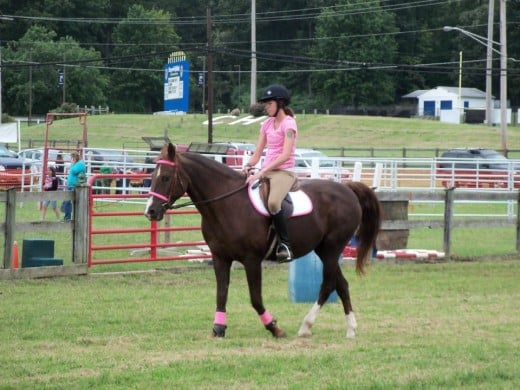
What Should You Work On Next?
So now you should have a better understanding and feel for how to control the direction of your horse's whole body as you ride. You can't just ride the head and you can't just ride the back half. You have to ride the whole horse.
You should be riding with your crop on the outside hand for this, that way if despite your best effort the horse still wants out, you can swat him with the whip.
As you pass the barn door if you feel him drop his shoulder to go that way you are going to push hard on the outside leg, tap with the crop and bring both hands as far around to the inside as you can. It will almost feel like your hands are coming diagonally to the inside. Remember you have to use both reins if you just use one, his head will come to you while his body continues to go into the barn or towards the gate.
If you succeed on the first try at getting him to go by, give him a pat and then focus right back on going back to work, pushing him to keep a nice steady tempo. Then change direction, reverse my instructions and try it the other way.
Remember, I know it can be scary when your horse won't steer, but as you follow these steering instructions you need to take a deep breath and try to keep on pushing forward. Remember, the horse is trying to get out of work, so if he gets to slow down a lot or stop he is still winning.
Eventually, once your horse realizes you know how to keep him from escaping he will quit trying. Some horses take longer than others. It is also hard with lesson horses because you might do a fabulous job of correcting their escape attempts, but then the next day the next rider isn't as successful, and he gets away with it again.
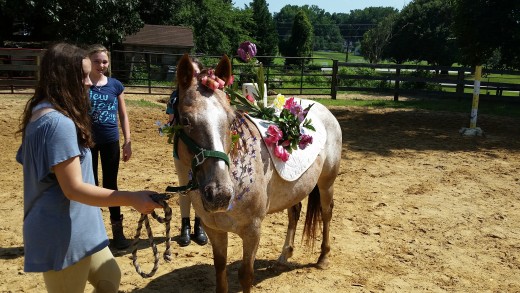
The Other Escape Method-Not Stopping Or Turning When Told To
So this is basically when your horse is headed straight down the rail toward the barn or gate and just won't turn, they just hold the bit in their mouth, lean on it and keep on trucking out of the arena. This is hard since they are so much stronger than us, but we can use a method that doesn't have anything to do with strength, but with technique.
We are basically going to do a milder version of a one rein stop, a technique taught by some trainers to help students with horses that are running off with them.
You are going to practice standing still on your horse, pick a side to start with. Then you are going to slide your hand down that rein until your horses head comes around to your foot. This will abruptly stop, slow or change the direction of your horse if he is leaving the arena or going in the barn or somewhere else he isn't supposed to be.
Try it both ways at the walk, and then try stopping your horse with this method at a slow trot. Once they are responding well and stopping for you at a trot, then you can do the one rein turn (as we will call it since the goal is to not give them the satisfaction of stopping.) Then as soon as your horse is pointed in the new direction pick up the trot again.
So you will ride around the arena trotting, one rein turns as we call it, continue on the other way. As you feel more confident with it, gradually start moving your exercise around the arena so you are getting closer to your horse's preferred escape route. It is possible that now that your horse feels you being more assertive and you have kept him so busy changing directions, that he may not try to escape.
If he does, you are going to use the technique we practiced, turn the horse with one rein in the direction you want to go ( if you do it in the direction they want to go they are halfway winning and we can't have that). Once you have gotten him turned around in the direction you want, you are going to send him forward as soon as possible and put his mind back to his work. We don't want him to feel like this behavior gave him any sort of break or relief if he gets that, he will try it again.
Hopefully, with the use of these techniques, you can help keep your horse in the arena where he belongs. Remember, when you ride you have to ride with both your legs and hands all the time. Two hands on skinny leather reins by themselves can't control a thousand pound animal. You have to ride the whole horse!
If you successfully get your horse to the point where he doesn't do it with you anymore, don't be surprised if he tries it again at some point if another rider let him get away with it. You can't really blame the lesson horses for seeing what they can get away with. I mean, would you want to work any harder than necessary? So don't get frustrated, just think about these exercises and that you might be able to help the next rider to have a better lesson.
Good Riders Got Good Riding Bad Horses!
All of these dirty little tricks that the lesson horses play are really improving you as a rider. They are teaching you to use your hands and legs together to control the horse. Most importantly though, they are giving you experiences that you can take things from and use to help you on future horses.
Remember, as much as they don't like to admit it, those who only ride the easy horses will never be as skilled and confident as those who rise to the challenge of a testier horse.
If any of you readers have a specific issue you would like me to address feel free to contact me and I'd be happy to offer suggestions.
